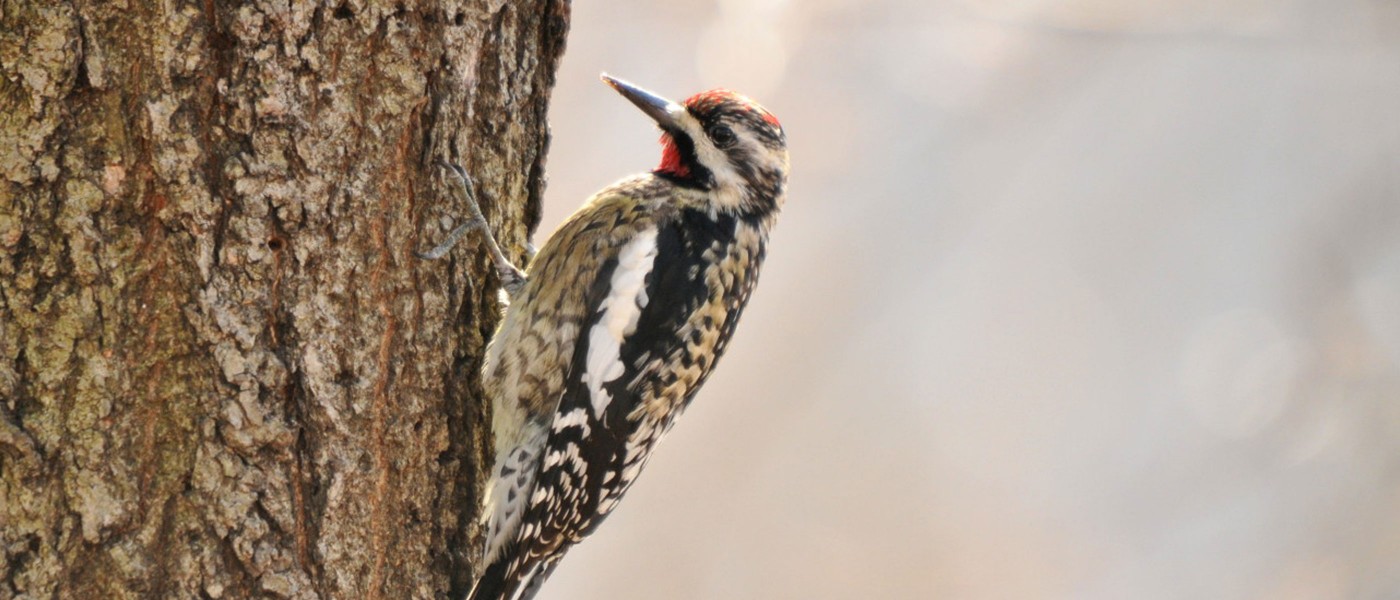Birds of Brooklyn: Yellow-Bellied Sapsucker
What do the wolf, the beaver, and the yellow-bellied sapsucker have in common? Each is a keystone species, that is, a species that by its actions may affect a whole community. In many cases, other species greatly depend upon their actions for food, shelter, and habitat. As a predator, the wolf keeps certain animal populations, like deer, from becoming overabundant and destructive to the surrounding habitat. The beaver creates habitat for songbirds, ducks, and muskrats by building dams. The yellow-bellied sapsucker provides not only habitat but also food for other species.
This medium-sized woodpecker is what’s known as a primary cavity-nesting bird. It makes—by drilling into a somewhat decayed tree—a cavity where it can build a nest and raise young. The next year, secondary cavity-nesting birds like swallows, chickadees, and bluebirds can then move in to nest there and raise their own young.
The yellow-bellied sapsucker is also a great provider of food. It drills many “wells” in living trees that bleed throughout the year. The sap attracts insects, and the sapsucker feeds on those as well as the sap itself. Other small birds like warblers and hummingbirds, as well as butterflies and bats, also come to these sap wells to feed. Sapsucker wells have been found in over a hundred species of trees, but the sapsucker seems to prefer trees that bleed more than others, such as red maple and birch.
The yellow-bellied sapsucker is a migrant and winter resident in the Garden and elsewhere in Brooklyn. It migrates from the Catskills and other points north starting in October, and by now it’s pretty common around here. Every year during Audubon’s Christmas Bird Count, at least four individuals are found either in BBG or Prospect Park. (This year’s Brooklyn count takes place Saturday, December 20.)
You may spot this woodpecker here from now until April, when it heads back north. The yellow on the belly is very pronounced in adults but almost lacking in young and immature birds. Its sap-sucking behavior makes it fairly easy to spot—it stays on tree trunks for long periods of time doing its thing, and it makes less noise as it pecks than other woodpeckers.
So try to catch this essential bird in action—and be sure to appreciate its contributions. Though its funny name is the butt of many jokes about birds and birding, the yellow-bellied sapsucker is quite important to many species and deserves to be taken a little more seriously.
The Birds of Brooklyn series looks at some of the most familiar and fascinating birds that call Kings County their habitat.


